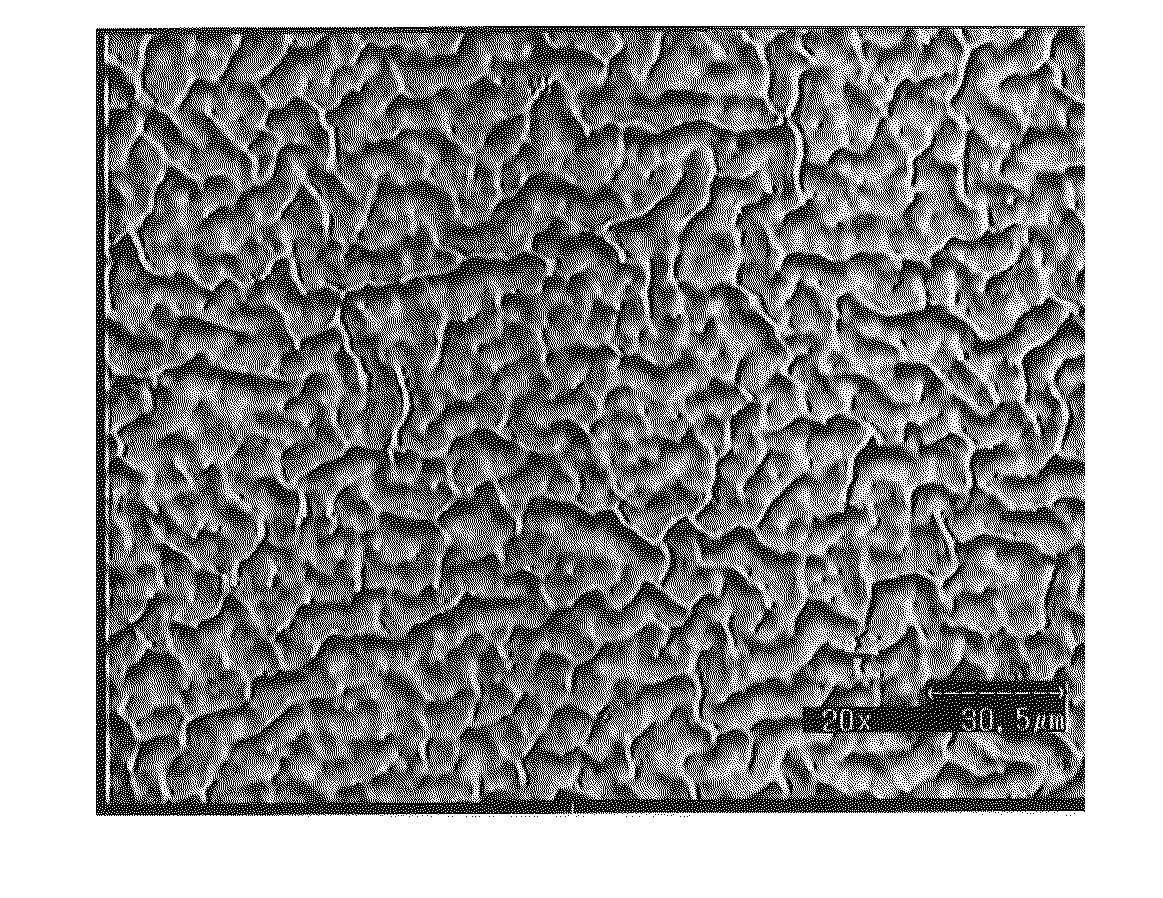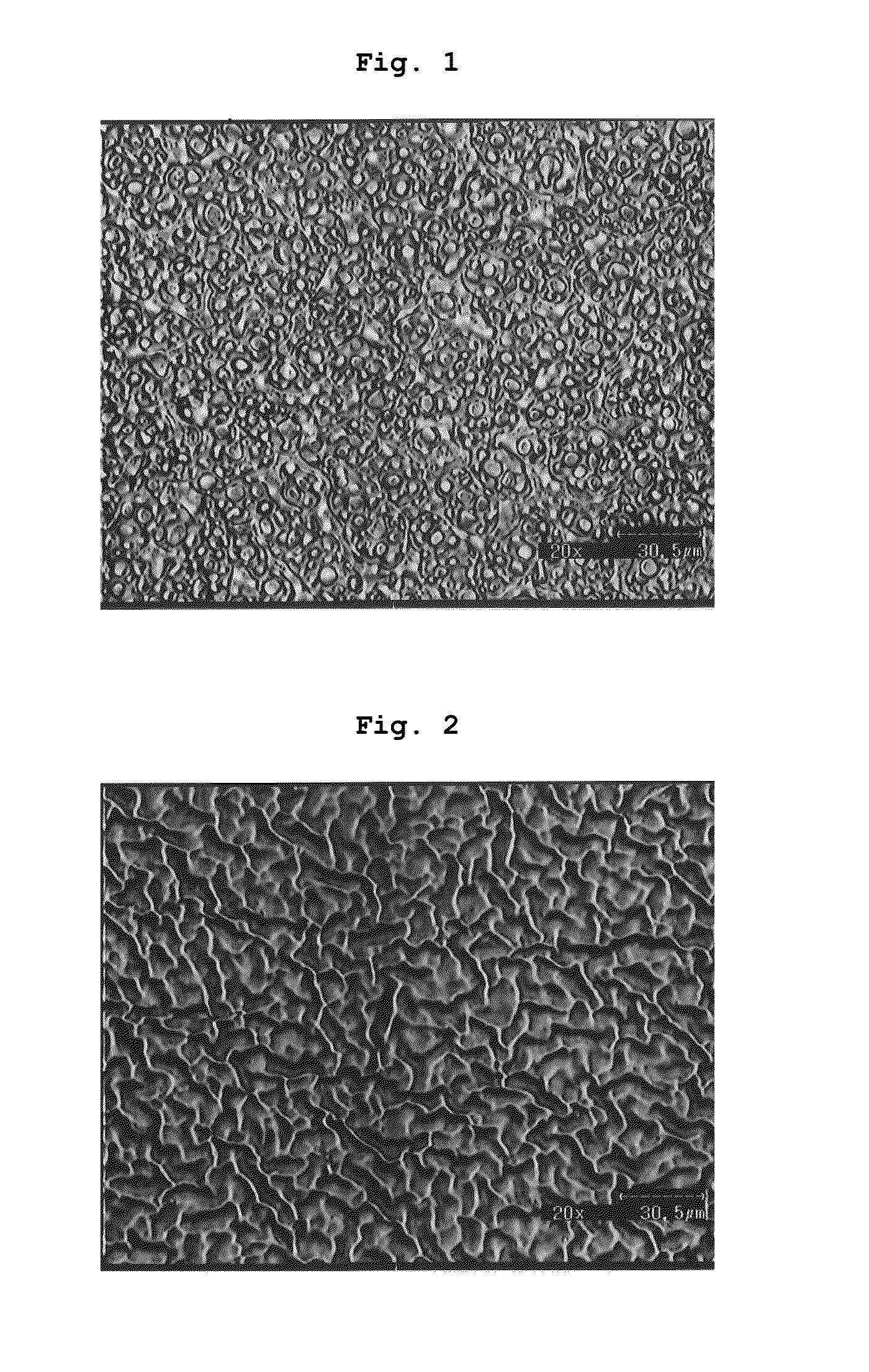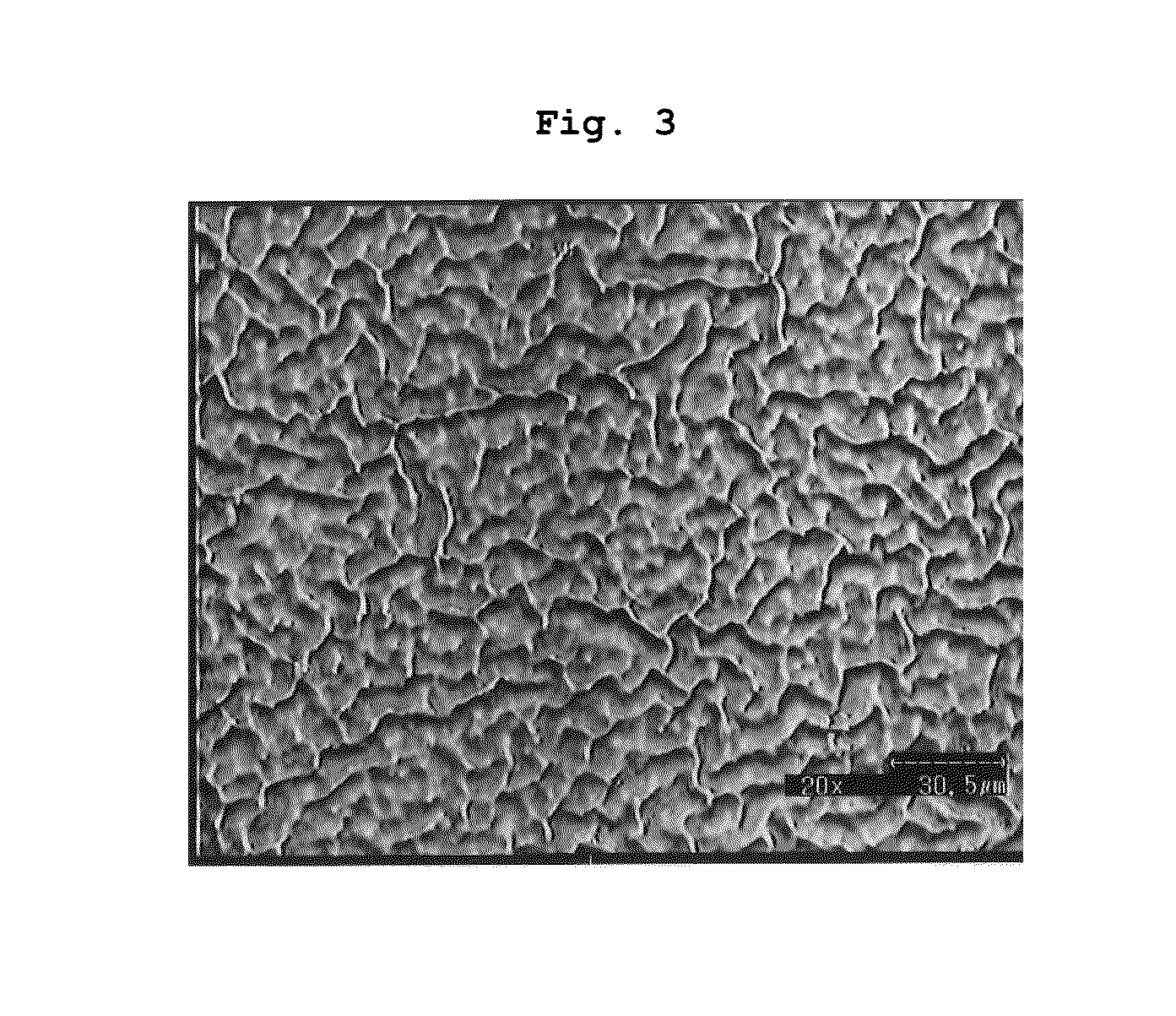Anti-glare film and process for producing the same
a technology of anti-glare film and film processing technology, applied in the field of anti-glare film, can solve problems such as image quality decline, achieve the effects of preventing (subduing) sparkling, reducing haze and clarity, and reducing glar
- Summary
- Abstract
- Description
- Claims
- Application Information
AI Technical Summary
Benefits of technology
Problems solved by technology
Method used
Image
Examples
example 1
[0175]In a mixed solvent containing 25 parts by weight of methyl ethyl ketone (MEK) and 12.15 parts by weight of 1-butanol were dissolved 5.65 parts by weight of an acrylic resin having a polymerizable unsaturated group (s) in a side chain thereof [a compound in which 3,4-epoxycyclohexenylmethyl acrylate is added to one or some carboxyl group(s) in a (meth)acrylic acid-(meth)acrylate copolymer; manufactured by Daicel Corporation, “CYCLOMER P(ACA)320M”, solid content: 49.6% by weight], 1.2 parts by weight of a cellulose acetate propionate (acetylation degree=2.5%, propionylation degree=46%, number-average molecular weight in terms of polystyrene: 75000; manufactured by Eastman, Ltd., “CAP-482-20”), 4 parts by weight of a polyfunctional acrylic UV-curable compound (manufactured by DAICEL-ALLNEX Ltd., “DPHA”, viscosity: 5250 mPa·s), 2.77 parts by weight of an acrylic UV-curable compound (manufactured by DAICEL-ALLNEX Ltd., “PETIA”, viscosity: 1100 mPa·s), and 0.53 parts by weight of a ...
example 2
[0178]In a mixed solvent containing 25 parts by weight of MEK and 12.15 parts by weight of 1-butanol were dissolved 5.65 parts by weight of an acrylic resin having a polymerizable unsaturated group (s) in a side chain thereof [CYCLOMER P(ACA)320M], 1.2 parts by weight of a cellulose acetate propionate (CAP-482-20), 6 parts by weight of a polyfunctional acrylic UV-curable compound (DPHA), 0.77 parts by weight of a silicone-containing acrylic UV-curable compound (manufactured by DAICEL-ALLNEX Ltd., “EB1360”, viscosity: 2100 mPa·s), and 0.53 parts by weight of a photo initiator (IRGACURE 907). This solution was cast on a PET film having a thickness of 100 μm (A4300) with the use of a wire bar #24, and then allowed to stand for 2 minutes in an oven at 90° C. for evaporation of the solvent to form a coat layer having a thickness of about 7 μm. Then, the coat layer was subjected to UV curing treatment for about 10 seconds by irradiation of ultraviolet ray derived from a high-pressure merc...
PUM
 Login to View More
Login to View More Abstract
Description
Claims
Application Information
 Login to View More
Login to View More - R&D
- Intellectual Property
- Life Sciences
- Materials
- Tech Scout
- Unparalleled Data Quality
- Higher Quality Content
- 60% Fewer Hallucinations
Browse by: Latest US Patents, China's latest patents, Technical Efficacy Thesaurus, Application Domain, Technology Topic, Popular Technical Reports.
© 2025 PatSnap. All rights reserved.Legal|Privacy policy|Modern Slavery Act Transparency Statement|Sitemap|About US| Contact US: help@patsnap.com



